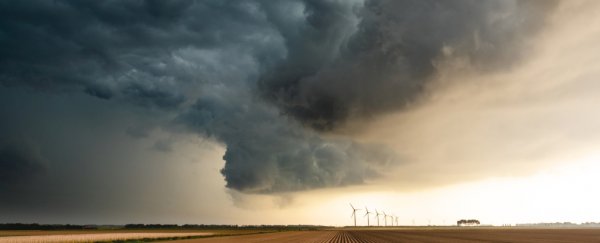If you're waiting for the rain to wash away the pollen and alleviate your allergy woes, you may be barking up the wrong tree - in springtime, at least. New research has found that spring rain can generate more pollen problems than it solves.
Measurements of pollen in the air during and after spring rainfall has found that bits of pollen can remain airborne for up to 11 hours - presenting a previously unconsidered potential breathing hazard for people with allergies and asthma.
The researchers found two distinct effects. Firstly, the rain did indeed suppress whole pollen grains, just as expected. But the team's measurements found a significant increase in fragments of pollen grains.
"Our results show that while pollen grains decrease substantially during rain, peak concentrations of submicron pollen fragments occur during rain events and then persist for several hours," said analytical chemist Elizabeth Stone of the University of Iowa.
"People who are sensitive to pollen in season should avoid going outdoors during rain events, especially thunderstorms, and for several hours afterward."
Researchers in the early noughties made some interesting discoveries about pollen. They found that grains that are usually too large to inhale - like birch pollen - and some smaller ones tend to rupture in high humidity and moist conditions. This causes them to shatter into smaller pieces called subpollen particles.
In addition, research has found that pollen grains can be carried up to altitudes 10 times higher than the roughly 100-kilometre (62 miles) Earth-space boundary. Pollen that reaches the cloud layer can shatter into subpollen particles and then hitchhike back down to the surface on raindrops and downdrafts.
Because these subpollen particles are so much smaller and lighter than whole pollen grains, they can remain airborne for a longer period of time - but this timeframe hasn't been quantified. So, researchers from the University of Iowa used volumetric spore traps to check the damage.
In April and May of 2019, they recorded 28 days of rainfall in Iowa City, including a severe storm that generated a tornado. And they found that, although the subpollen particle count peaked during and just after the rain, falling pretty quickly, a percentage of the particles could still linger in the air.
They tended to remain for a period of 2.5 to 11 hours - the stronger the rainfall, the longer subpollen particles floated around afterwards.
The highest subpollen particle count occurred during a storm on May 18 - the team recorded a peak count of 1.3 million particles per cubic metre. This count subsided to below 400,000 particles per cubic metre within half an hour, but remained elevated above normal background concentrations for hours afterward.
The finding, the team said, suggests that people sensitive to pollen should be careful after it rains, and not assume the pollen count will necessarily be lower.
"People who are susceptible or have allergies to pollen in season should consider rain events and especially thunderstorms to be a potential source of allergenic particles that could have negative respiratory impacts on them," Stone said.
"My advice would be to stay indoors during and in the hours following rains and thunderstorms in the pollen season that they're allergic to."
The research has been published in Environmental Science & Technology Letters.
